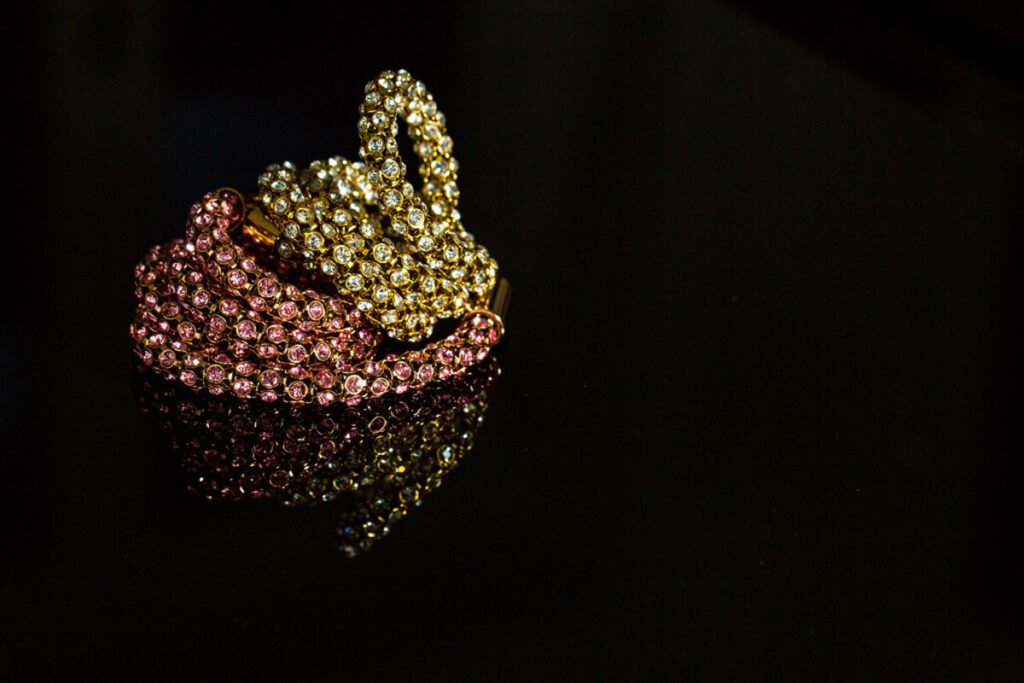Jewelry trends come and go, and a piece that has been en vogue during recent years is rose gold. Everywhere we look, it seems like almost every merchandise has a rose gold color available. There’s rose gold kitchenware, rose gold phones, rose gold nail polish, and of course, rose gold jewelry. The last has been receiving massive attention in the previous years, but many people don’t understand what it really is. Is rose gold real gold? What are its components? Is rose gold the same as copper? These are just some of the most common questions that people have when it comes to this metal.
Is Rose Gold Real Gold? What You Need to Know
In this article, we’ll be answering all the basic questions you have about rose gold and more. We’ll delve into the origins of this metal, when it emerged, who used it first, and how it rose to fame. We’ll also provide details about its composition and how it compares to yellow gold – another popular metal. Lastly, we’ll give you some tips on how to distinguish real rose gold from the fake ones. You’ll learn so much about this gorgeous metal by the end of this post, that you might just become a rose gold aficionado yourself!
What is Rose Gold?
Is rose gold pure gold? No. Rose gold doesn’t occur naturally; it’s an alloy, which is a combination of multiple metals. Rose gold is a blend of pure gold, silver, and copper–the element responsible for its signature pink hue. Pure 24-karat yellow gold in itself is too malleable to serve as functional jewelry, which is why it needs to merge with other metals to make it stronger and suitable for wear. Meanwhile, copper is extremely durable because it doesn’t deteriorate or corrode over time. In fact, this metal is so tough that it’s used as a material in the construction of buildings, usually for roofing.
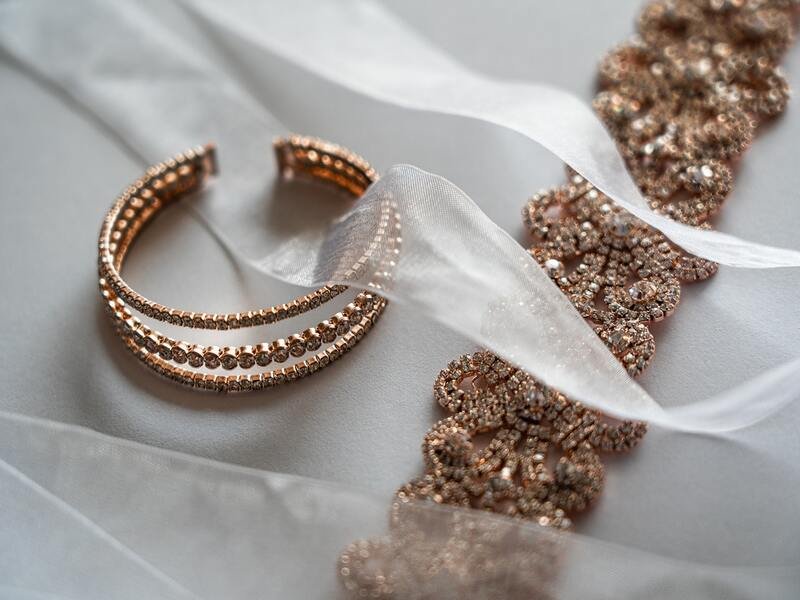
The dash of silver and copper in rose gold jewelry diminishes the yellow tone of pure gold and produces the beautiful shade of pink that we’ve come to adore. This romantic shade of metal is sometimes called pink gold or red gold. Pink gold contains less copper and has a light pink hue. On the other hand, red gold pieces have a higher percentage of copper in them, which gives them a redder color.
History of Rose Gold
Contrary to popular belief, rose gold is anything but new; it’s been around since the mid to late 19th century. It originated in Russia when a famous jeweler named Carl Fabergé incorporated this shade of metal into his designs in the late 1800s. Its name was Russian Gold back then and, ultimately, became Rose Gold when it gained popularity in other parts of the world.
It eventually went out of fashion until the lavish and feminine 1920s put it back in the spotlight. Rose gold was used in the making of engagement rings and fine jewelry. The world-famous designer Cartier was instrumental in the resurgence of rose gold in the jewelry industry. One piece, in particular, brought back the excitement of the masses for this metal: the Trinity Ring, which featured interlocked bands of yellow, white, and rose gold. Designed by Louis Cartier in 1924, this piece was commissioned by Jean Cocteau, a famous French writer, filmmaker, artist, and playwright. He was known for donning the Trinity Ring on his pinky finger.

The demand for rose gold has come and gone over the decades, with its popularity often dictated by celebrities and current fashion styles. Today, this pretty pink metal has claimed its rightful place in jewelry stores, your favorite magazines, and on the hands of trendsetters. And it’s easy to see why so many have come to love this metal–it possesses a unique aesthetic and a sophisticated element of romance that can only be said of rose gold jewelry.
Is Rose Gold Real Gold?
This is one of the most common questions people have about rose gold. And to answer this, we have to go back to the concept discussed above regarding its composition. As mentioned earlier, rose gold is an alloy; it’s a combination of the metals yellow gold, silver, and copper. Hence, it contains real gold, but it’s not entirely made of pure 24-karat gold, which contains nearly 100% gold. To explain it better, let’s take a look at where rose gold falls on the purity spectrum.
Here is a simple breakdown of the most popular jewelry karats:
- 24K gold is 99.9% pure gold
- 22K gold is 91.7% pure gold
- 18K gold is 75% pure gold
- 14K gold is 58.3% pure gold
- 10K gold is 41.7% pure gold
These same percentages also apply in rose gold jewelry, but the portion of silver and copper will vary. The most common formula, however, is 75% pure gold, 22.5% copper, and a small amount of silver. How red or pink it looks will depend on the ratio of yellow gold to copper. Less yellow gold and higher copper will yield a more reddish color and vice-versa. For example, 14K rose gold is more of a rose pink color than 18K rose gold because the former has a higher copper content and lower yellow gold content.
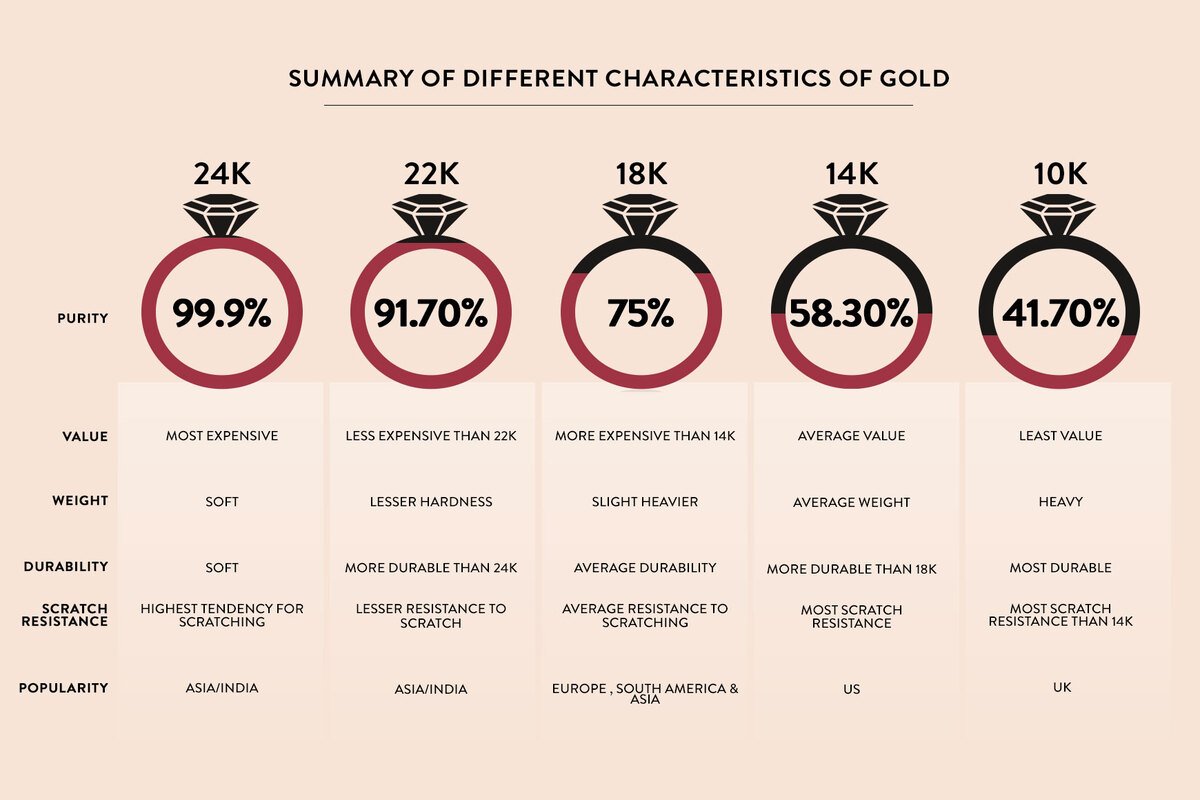
So when people ask, “is rose gold worth more than gold?” the straight answer is that it’s as valuable as any yellow gold or white gold jewelry of the same karat because they contain the same amount of gold in them. In other words, a 14K rose gold bracelet and a 14K yellow gold bracelet is of the same value because they both contain equal parts of gold, which is 58.3%.
Rose Gold Meaning
Gold itself is a symbol of wealth, so it’s only natural for the rose gold colour to be associated with style, elegance, and affluence. Its gorgeous pink hue gives it a romantic and refined appearance and provides its wearer with a dash of sophistication. In color psychology, this shade is believed to create a sense of calm and can alleviate anger.
Can Rose Gold Tarnish?
Tarnish refers to when metals lose their natural luster. This happens because the metals in jewelry react to oxygen in the air and other elements in its surroundings. Tarnish is usually visible on pieces of older or used jewelry and appears as a dark layer of dirt on the surface of your jewelry.
So, does rose gold tarnish? Owners of this sweet-looking metal will be happy to know that it doesn’t. However, this doesn’t mean that it’s safe from all physical changes. Of course, after years of usage, rose gold jewelry will eventually appear darker and slightly redder than it used to be. It’s inevitable. This isn’t tarnishing, but a result of the copper part of the rose gold becoming a little darker or more vintage looking. You won’t have to worry too much about it, though, as it takes many years of wear before it happens. This color transformation even excites some rose gold jewelry owners because it gives their pieces a more interesting and vintage look.
Rose Gold vs Yellow gold
To make an effective comparison of these two metals, let’s discuss each of their properties under the criteria listed below.
Are they hypoallergenic?
Between rose gold and yellow gold, the latter is more hypoallergenic, which means it won’t likely cause an allergic reaction to its wearer. This difference all boils down to the alloys used in both metals.
Rose gold contains copper, the metal responsible for its pink tinge. Unfortunately, copper is an allergen for people with sensitive skin. Meanwhile, yellow gold can sometimes contain copper and nickel, another metal allergen. Still, in this case, people have the option to purchase yellow gold jewelry that doesn’t have any of those metals. Also, higher karat gold has a smaller percentage of alloys that can cause allergic reactions.
With that, yellow gold is the more hypoallergenic metal.
Durability
Rose gold is more durable than yellow gold because of its copper content. Copper is one sturdy metal, which means that rose gold jewelry can withstand daily usage. It’s not resistant to scratching, though, but these damages can be easily polished off to bring back its natural luster. Meanwhile, yellow gold is more prone to deformities and scratches. Because of its purity, this metal requires regular polishing to maintain its beauty. Both are still great choices, but rose gold is the better option if you’re the type who wears jewelry every day.
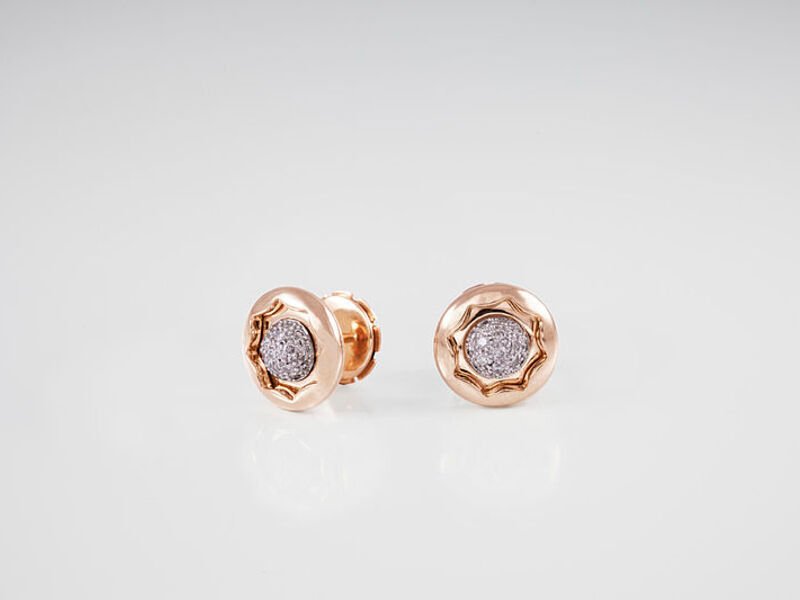
Skin tone compatibility
Rose gold complements all skin tones, but golden, tan, and dark skin beautifully highlights its blush undertones. Yellow good radiates on warmer skin tones, including olive and dark skin.
Popularity
Yellow gold went out of fashion in the mid-90s as white gold and silver took centerstage. At the time, people thought the metal was tired and tacky. Although it became outdated during specific periods in history, we can’t deny that yellow gold is a time-honored metal. It’s been a beloved metal for thousands of years, dating back to the Paleolithic age of 40,000 B.C.
Rose gold is relatively recent as it originated in Russia during the 1800s. However, like yellow gold, rose gold’s peak in the 1920s was replaced by white gold and silver during the Art Nouveau era. In recent years, however, rose gold has been dominating the jewelry scene. Everybody wanted to get their hands on rose gold items, and we’re still seeing that today.
So, which of these metals is better? There’s no way to predict what will be in and out in the coming years, so the rule of thumb when shopping for jewelry is this: buy what you love. If you can imagine yourself looking fabulous wearing that rose gold bracelet, then buy it! Who cares if it goes out of style in five years? What’s more important is that you –the wearer–love that piece with all your heart.
Jewelry trends come and go, but the sentimental value of jewelry is what makes it truly in style and of worth to you.
Is Rose Gold Valuable?
Yes, as long as it’s authentic. How do you know if your rose gold is real?
Ideally, every genuine piece of jewelry would have a hallmark or an official stamp indicating its karat weight. There is no such thing as pure rose gold, so if your jewelry is marked as 24K, it’s likely fake.
If you can’t find a hallmark, then its time to inspect your piece further. Do you notice any discoloration? Look for any signs of it in areas of most wear, such as the inside of a ring band. If you see another color underneath, then it’s most probably only gold-plated and should be marked with a 925 hallmark. There’s no shame in buying gold-plated jewelry. However, it’s not solid gold, so it should always be labeled accordingly for transparency.
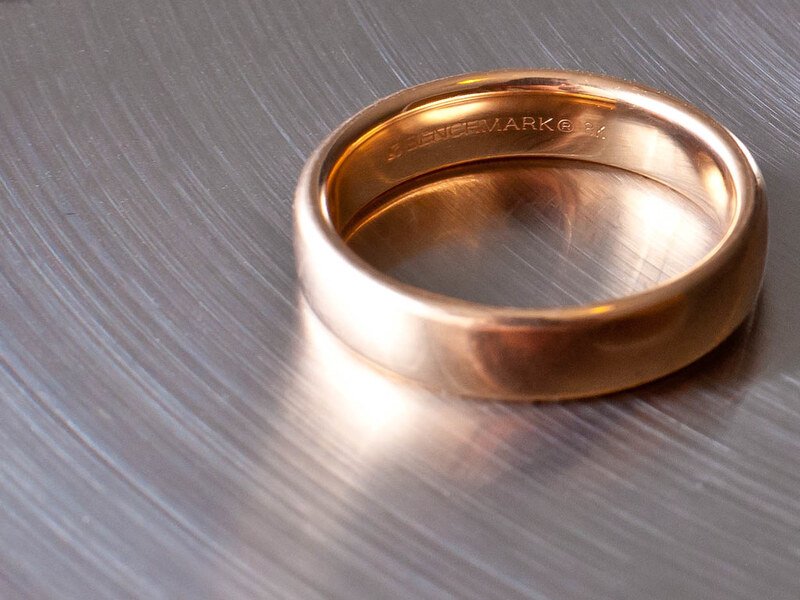
One easy at-home test you can do to check if your jewelry is fake is a magnet test. If it sticks to the magnet, it’s counterfeit; if it doesn’t, then it’s real.
The steps above will help you identify if your piece is genuine. Still, the best way to determine the value of your jewelry is to have it appraised by a professional. The bottom line is this: rose gold value depends on its authenticity.
Rose gold has been around for over 200 years, and yet, its universality only continues to rise. This stunning pink metal, with its brilliant blend of pure gold, silver, and copper, is an item of jewelry that the world has come to know and cherish. Aside from rose gold’s durability and undeniable charm, this alloy is exceptionally versatile as it complements all skin tones. If you’re struggling to find the next piece of jewelry to add to your collection, one thing is for sure: you can never go wrong with choosing rose gold.
Need help in picking out the perfect jewelry? Check out this guide we created about buying jewelry for yourself.

